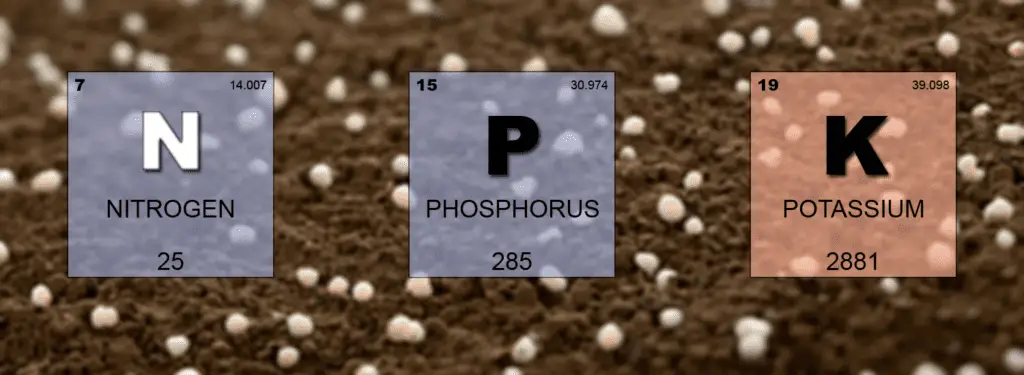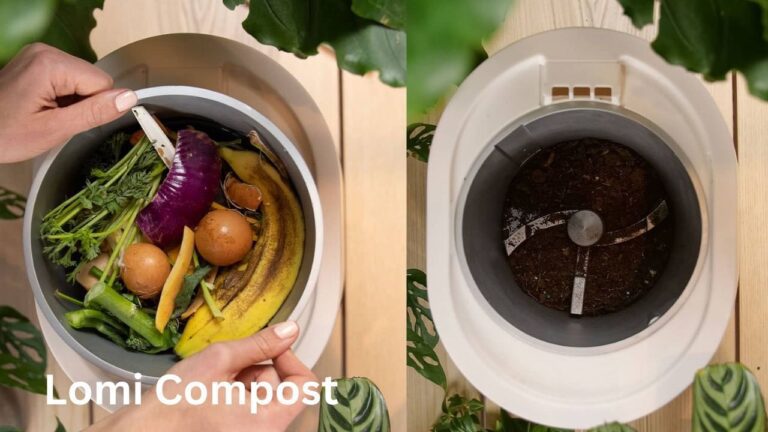What is NPK Ratio and Why It Matters for Your Plants: A Complete Guide to Nutrient Balance
Table of Contents
Understanding the Importance of Nutrient Balance for Plant Health
Maintaining proper nutrient balance is essential for the overall health and vitality of plants. Just like humans, plants require a variety of nutrients to function optimally and achieve their full growth potential. Nutrient balance refers to the right combination and proportions of essential elements that plants need to thrive.
When a plant lacks or receives an excess of certain nutrients, it can have serious consequences on its health. For instance, a deficiency in nitrogen can result in stunted growth and yellowing leaves, while an excess of phosphorus can lead to poor root development and decreased flowering. These imbalances can weaken plants, making them more susceptible to diseases, pests, and environmental stressors.
To ensure that plants receive the right levels of essential nutrients, it is crucial to understand the principles of nutrient balance. By providing the correct combination of nitrogen, phosphorus, and potassium (NPK), gardeners can support various aspects of plant health, such as leaf and stem development, root growth, flowering, and overall vigor. Achieving and maintaining optimal nutrient balance is the key to promoting robust and thriving plants in any garden or agricultural setting.

The Role of NPK Ratio in Promoting Plant Growth
Nutrient balance plays a crucial role in promoting the growth and development of plants. Among the different elements required by plants, nitrogen (N), phosphorus (P), and potassium (K) are the three key nutrients that make up the NPK ratio. Each of these nutrients has its own specific role in promoting plant growth.
Nitrogen is essential for the development of healthy leaves and stems. It is a major component of chlorophyll, the pigment responsible for photosynthesis. Adequate nitrogen levels in the soil result in vigorous growth, lush foliage, and increased overall plant size. Insufficient nitrogen can lead to yellowing of leaves, stunted growth, and decreased plant vigor.
Phosphorus, on the other hand, plays a significant role in root development and flowering. It is essential for energy transfer within the plant, as well as for the formation of DNA, RNA, and ATP. Phosphorus promotes vigorous root growth, enabling plants to absorb water and nutrients more efficiently. It also encourages the development of strong flower buds and promotes flowering and fruiting.
Potassium, the third nutrient in the NPK ratio, is important for overall plant health. It is involved in numerous physiological processes, such as photosynthesis, protein synthesis, and water regulation. Potassium improves the plant’s ability to resist diseases, pests, and environmental stresses. It also enhances fruit quality and promotes the movement of sugars and nutrients throughout the plant.
Understanding the role of each nutrient in the NPK ratio is crucial for promoting optimal plant growth. By ensuring the right balance of these nutrients, gardeners can create an environment where plants thrive and reach their full potential. In the following sections, we will delve deeper into the specific benefits of nitrogen, phosphorus, and potassium, as well as the factors to consider when choosing the right NPK ratio for different types of plants.
Identifying the Three Key Nutrients in NPK Ratio
The NPK ratio is a common term used in gardening and agriculture to refer to the three key nutrients that are essential for plant growth and development. These nutrients are nitrogen (N), phosphorus (P), and potassium (K). Each of these nutrients plays a crucial role in different aspects of plant health and function.
Nitrogen is an essential nutrient for plants as it plays a significant role in promoting leaf and stem development. It is a key component of chlorophyll, the pigment responsible for photosynthesis, which is vital for energy production in plants. Furthermore, nitrogen is a major building block for proteins, enzymes, and DNA, which are essential for plant growth and metabolism.
Phosphorus is another essential nutrient that is crucial for root growth and flowering. It plays a vital role in energy transfer and storage within plants, aiding in the conversion of sunlight into chemical energy through the process of photosynthesis. Phosphorus is also involved in the development of strong and healthy roots, promoting the absorption of other essential nutrients and water uptake.
Potassium is a fundamental nutrient that contributes to the overall health and resilience of plants. It plays a pivotal role in various physiological processes, including osmoregulation, enzyme activation, and the regulation of water and nutrient movement within plants. Potassium also enhances plant disease resistance, improves drought tolerance, and helps with the synthesis of sugars and carbohydrates. It is crucial for overall plant growth, flowering, and fruit development.

In summary, understanding the three key nutrients in the NPK ratio is essential for promoting healthy plant growth and maximizing productivity. Nitrogen aids in leaf and stem development, phosphorus supports root growth and flowering, and potassium contributes to overall plant health and resilience. By providing the right balance of these nutrients, gardeners can ensure optimal growth and vitality in their plants.
How Nitrogen Enhances Plant Leaf and Stem Development
Nitrogen is an essential nutrient for plants, playing a crucial role in enhancing leaf and stem development. As one of the three key nutrients in the NPK ratio, nitrogen deserves special attention for its profound impact on plant growth.
Firstly, nitrogen is a vital component of chlorophyll, which is responsible for the green color in leaves. It is the fundamental pigment that enables photosynthesis, the process by which plants convert sunlight into energy. Adequate nitrogen supply ensures the production of sufficient chlorophyll, leading to vibrant and luscious foliage. This not only enhances the aesthetic appeal of plants but also enables them to optimize their energy production, supporting their overall growth and vigor.
Additionally, nitrogen stimulates cell division and elongation, facilitating the growth of both leaves and stems. It plays a vital role in the synthesis of proteins, which are fundamental building blocks for plant cells. With an ample supply of nitrogen, plants can rapidly generate new cells, leading to the expansion of leaves and the elongation of stems. This growth is essential for plants to maximize their exposure to sunlight and optimize their photosynthetic capabilities. Moreover, robust stems provide necessary support for plants, preventing them from toppling over under the weight of foliage or flowers.
In conclusion, the presence of nitrogen in plants is vital for the development of healthy, abundant foliage and sturdy stems. Its role in chlorophyll synthesis and protein production cannot be overstated. By understanding the significance of nitrogen and its correlation to leaf and stem development, gardeners can make informed choices to ensure optimal nutrient balance and promote the growth and vitality of their plants.
The Role of Phosphorus in Root Growth and Flowering
Phosphorus, one of the three key nutrients in the NPK ratio, plays a crucial role in promoting root growth and flowering in plants. This essential nutrient is involved in many physiological processes, making it vital for overall plant health. When plants receive an adequate supply of phosphorus, they develop robust root systems that enhance nutrient absorption, water uptake, and overall plant stability.
| Aspect | Role of Phosphorus |
|---|---|
| Root Growth | 1. Cell Division: Phosphorus is essential for cell division and growth in the root tips, promoting overall root development. |
| 2. Energy Transfer: It plays a crucial role in energy transfer and storage, facilitating the utilization of nutrients required for root elongation. | |
| 3. Nucleic Acid Formation: Phosphorus is a key component of DNA and RNA, essential for genetic material synthesis during root cell formation. | |
| Flowering | 1. Energy Transfer: Phosphorus is involved in energy transfer processes, contributing to the energy-intensive flowering stage. |
| 2. Flower Formation: It promotes the development of flower buds and supports the transition from vegetative to reproductive growth. | |
| 3. Photosynthesis: Phosphorus is essential for the synthesis of ATP and other energy-rich compounds critical for the photosynthetic process, which is vital for flower production. |
In addition to supporting root growth, phosphorus is also instrumental in promoting flowering in plants. It plays a vital role in the production of energy-rich molecules like adenosine triphosphate (ATP) and adenosine diphosphate (ADP) that are essential for plant metabolism. These energy molecules are involved in various biochemical processes, including the production of proteins, enzymes, and hormones that regulate flowering and fruiting. Consequently, phosphorus deficiency can lead to poor flowering, delayed maturity, and reduced fruit production in plants.
Understanding the Benefits of Potassium for Overall Plant Health
Potassium is an essential nutrient for overall plant health and plays a crucial role in various physiological processes. It is involved in enzyme activation, photosynthesis, protein synthesis, and the regulation of stomatal opening and closing. Adequate potassium levels in the soil are necessary for plants to thrive and reach their full potential.
One of the key benefits of potassium is its ability to improve plant water use efficiency. This nutrient helps plants maintain proper hydration by regulating the opening and closing of stomata, the tiny pores on the leaves. By controlling the stomatal aperture, potassium ensures that water loss through transpiration is minimized, even in challenging environmental conditions. Consequently, plants with sufficient potassium are better equipped to withstand drought stress and maintain healthy growth.
Potassium also aids in the transportation of sugars, nutrients, and water within the plant. It facilitates the movement of assimilates from leaves to other parts of the plant, such as roots, stems, and fruits. This transportation function is crucial for the overall development and proper functioning of the plant’s vascular system. In addition, potassium enhances the uptake and utilization of nitrogen in plants, helping to optimize their nutrient efficiency. As a result, plants with ample potassium levels exhibit robust growth, improved fruit quality, and increased resistance to pests and diseases.
To harness the benefits of potassium for plant health, it is essential to ensure a balanced nutrient supply. A deficiency or excess of potassium can lead to a range of problems in plants. Severe potassium deficiency can result in stunted growth, discoloration of leaves, and decreased fruit and seed production. On the other hand, excessive potassium can interfere with the uptake of other essential nutrients, leading to deficiencies in calcium, magnesium, or trace elements. Therefore, it is crucial to maintain an appropriate potassium level in the soil and monitor plant responses through regular nutrient testing. By providing adequate potassium, gardeners and plant enthusiasts can promote healthier plants with improved vigor, resilience, and overall performance.
Factors to Consider When Choosing the Right NPK Ratio for Your Plants
When it comes to choosing the right NPK ratio for your plants, there are several factors that you need to consider. One of the most important factors is the specific needs of the plant you are growing. Different plants have different nutrient requirements, and it is essential to choose an NPK ratio that meets those requirements. For example, plants that primarily focus on leaf and stem development, such as lettuce and spinach, may require higher levels of nitrogen (N) in their fertilizer. On the other hand, plants that prioritize root growth and flowering, like roses and tomatoes, may benefit from higher levels of phosphorus (P) in their NPK ratio.
In addition to considering the specific needs of your plants, you should also take into account the characteristics of your growing environment. Factors like soil composition, pH level, and climate can all influence which NPK ratio will be most beneficial for your plants. Conducting a soil test can provide valuable information about the nutrient levels in your soil and help you determine which nutrients your plants are lacking. This information can guide you in selecting the appropriate NPK ratio to address any nutrient deficiencies and promote optimal plant growth. By considering both the needs of your plants and the conditions of your growing environment, you can make an informed decision when choosing the right NPK ratio for your plants.
• Consider the specific needs of your plants
• Different plants have different nutrient requirements
• Choose an NPK ratio that meets those requirements
– Plants focusing on leaf and stem development may require higher levels of nitrogen (N)
– Plants prioritizing root growth and flowering may benefit from higher levels of phosphorus (P)
• Take into account the characteristics of your growing environment
• Factors like soil composition, pH level, and climate can influence the NPK ratio needed
• Conduct a soil test to determine nutrient deficiencies in your soil
– Soil test provides valuable information about nutrient levels
– Helps in selecting appropriate NPK ratio to address deficiencies
By considering both plant needs and growing conditions:
– You can make an informed decision when choosing the right NPK ratio for your plants.
The Impact of NPK Ratio on Different Types of Plants
Different types of plants have varying nutrient requirements, and the NPK ratio plays a crucial role in meeting these needs. The impact of the NPK ratio on plants can greatly influence their growth and overall health.
For example, flowering plants, such as roses or tulips, have a higher demand for phosphorus (P) compared to nitrogen (N) and potassium (K). Phosphorus aids in the development of healthy roots and promotes robust flowering. A well-balanced NPK ratio, with a higher concentration of phosphorus, can help these plants produce vibrant blooms.
| Plant Type | NPK Ratio | Impact |
|---|---|---|
| Fruit-Bearing Trees | High in Potassium (K) | Promotes fruit development and overall vigor. |
| Leafy Vegetables | High in Nitrogen (N) | Encourages leafy growth and lush foliage. |
| Root Vegetables | High in Phosphorus (P) | Supports root development and tuber formation. |
| Flowering Plants | Balanced NPK (1:1:1) | Enhances overall plant health and blooming. |
| Crops (Grains) | Balanced NPK (1:1:1) | Supports balanced growth for optimal yield. |
| Succulents | Low Nitrogen (N) | Prefers lower nitrogen for compact growth. |
| Native Plants | Adapted NPK Ratios | Often thrive with ratios resembling local soil. |
On the other hand, leafy greens and vegetables, like spinach or lettuce, thrive with a higher nitrogen (N) content in the NPK ratio. Nitrogen promotes leaf and stem development, resulting in lush green foliage. These plants benefit from a higher N-to-P-K ratio, ensuring they receive the necessary nutrients to grow and produce abundant harvests.
Understanding the specific nutrient requirements of different plants is essential for achieving optimal growth and maximizing their potential. By tailoring the NPK ratio to suit their needs, gardeners can provide plants with the right balance of nutrients they require to thrive. With this knowledge, you can make informed decisions when choosing fertilizers or soil amendments, ensuring that your plants receive the nutrients they need for healthy and vigorous growth.
Common Signs of Nutrient Imbalance in Plants
Nutrient imbalance in plants can lead to a range of noticeable signs that indicate your plants are not receiving the necessary nutrients to thrive. One common sign of nutrient imbalance is yellowing or browning of leaves. When plants lack essential nutrients, their leaves may develop discoloration, starting from the edges or tips and gradually spreading throughout the entire leaf.
Another indication of nutrient imbalance is stunted growth or delayed development. Plants that are deficient in certain nutrients may exhibit slower growth rates or fail to reach their full potential. This can be particularly noticeable in the case of fruit-bearing plants, where inadequate nutrient levels can lead to smaller or underdeveloped fruits. Additionally, plants lacking in essential nutrients may also display reduced flowering or fewer blooms, affecting the overall aesthetics of your garden.
It is important to note that these signs can vary depending on the specific nutrient deficiency or imbalance. It is crucial to identify the specific nutrient issue in order to implement the appropriate corrective measures. By understanding and recognizing these common signs of nutrient imbalance, you can take timely action to restore the health and vitality of your plants.
How to Determine the NPK Ratio of Fertilizers and Soil Amendments
Determining the NPK ratio of fertilizers and soil amendments is essential for achieving optimal plant growth and health. The NPK ratio refers to the balance of three key nutrients: nitrogen (N), phosphorus (P), and potassium (K). Each of these nutrients plays a critical role in different aspects of plant development, and understanding their ratios is the first step in providing the right nutrition for your plants.
To determine the NPK ratio of a fertilizer or soil amendment, you need to check the product label or packaging. Look for the three numbers prominently displayed, indicating the percentage of each nutrient in the product. For example, a fertilizer with an NPK ratio of 10-10-10 means it contains 10% nitrogen, 10% phosphorus, and 10% potassium.

It’s important to note that different plants have varying nutrient requirements, so choosing the right NPK ratio for your specific plants is crucial. This can be determined by considering the plant’s growth stage, soil condition, and any specific needs or deficiencies it may have. By understanding the NPK ratio of fertilizers and soil amendments, you can provide a balanced nutrient profile for your plants, ensuring their health and productivity.
Remember, plants thrive when their nutrient needs are met. So take the time to determine the NPK ratio of your fertilizers and soil amendments, and tailor your plant nutrition accordingly. Doing so will help you create a thriving garden and enjoy the rewards of lush, vibrant plants.
Adjusting NPK Ratio to Meet Specific Plant Needs
Adjusting the NPK ratio is crucial for ensuring that your plants receive the right balance of nutrients to meet their specific needs. Different plants require different levels of nitrogen, phosphorus, and potassium, and understanding how to tailor the NPK ratio to each plant type is essential for promoting healthy growth and optimizing overall plant health.
To determine the appropriate NPK ratio for your plants, start by considering their specific nutrient requirements. Leafy green vegetables, for example, generally benefit from higher nitrogen levels to foster robust leaf and stem development. On the other hand, flowering plants and crops that produce fruits or vegetables may require a ratio that prioritizes phosphorus for enhanced root growth and abundant flowering.
It’s important to regularly monitor your plants for signs of nutrient deficiency or excess, as these can indicate an imbalance in the NPK ratio. Chlorosis, or yellowing of leaves, may indicate a lack of nitrogen, while stunted growth and poor flowering can suggest insufficient phosphorus. By adjusting the NPK ratio based on these observations, you can address any nutrient imbalances and ensure your plants receive the optimal combination of nitrogen, phosphorus, and potassium to thrive.
Stay tuned for the next section, where we’ll delve deeper into the relationship between the NPK ratio and soil pH, and provide valuable insights on achieving and maintaining optimal nutrient balance in your garden.
Understanding the Relationship Between NPK Ratio and Soil pH
Maintaining the proper balance of nutrients in soil is crucial for the health and vitality of plants. One of the key factors that can influence nutrient availability is the pH level of the soil. pH is a measurement of how acidic or alkaline the soil is, and it plays a significant role in determining how effectively plants can take up nutrients.
Different nutrients have different levels of availability at different pH ranges. For example, nitrogen is most readily available to plants in slightly acidic to neutral pH levels, while phosphorus is more easily accessible in slightly acidic to alkaline soils. Potassium, on the other hand, is relatively unaffected by pH and remains available across a wide range of soil pH levels. Understanding the relationship between NPK ratio and soil pH is crucial in ensuring that plants receive the nutrients they need for optimal growth and development.
Tips for Achieving and Maintaining Optimal Nutrient Balance in Your Garden.
Maintaining optimal nutrient balance in your garden is crucial for the health and growth of your plants. By providing the right combination and quantity of nutrients, you can ensure that your garden thrives and produces abundant yields. Here are a few tips to help you achieve and maintain this balance in your garden.
Firstly, it is essential to start with a soil test. This will give you valuable information about the current nutrient composition of your soil. By analyzing the levels of nitrogen, phosphorus, and potassium (NPK), as well as other essential micronutrients, you can determine the specific needs of your plants. Armed with this knowledge, you can then choose the appropriate fertilizers or soil amendments to address any deficiencies or imbalances.
Next, consider the specific requirements of the plants you are growing. Different plants have different nutrient needs, and it is important to cater to these requirements accordingly. For example, leafy greens like spinach and lettuce benefit from higher levels of nitrogen for lush foliage, while flowering plants like roses may require phosphorus-rich fertilizers to encourage blossoming. Take the time to research the optimal nutrient ratios for your specific plant varieties and adjust your fertilization practices accordingly.
Remember to monitor your garden regularly to ensure that nutrient levels remain in balance. Observing the growth and appearance of your plants can provide valuable insights into their nutrient needs. Signs of nutrient deficiencies or imbalances include stunted growth, yellowing or discolored leaves, poor fruit or flower production, and pest and disease susceptibility. Addressing these issues promptly by adjusting your fertilization practices can help bring your garden back into optimal balance.
By following these tips, you can achieve and maintain optimal nutrient balance in your garden, promoting healthy growth and maximizing your harvest. Remember to stay attentive to the needs of your plants, conduct regular soil tests, and make adjustments as necessary. With a well-balanced nutrient regimen, your garden will flourish and reward you with beautiful and bountiful yields.
What is the optimal nutrient balance for a garden?
The optimal nutrient balance for a garden depends on the specific needs of the plants being grown. It is typically achieved by providing the right ratio of nitrogen (N), phosphorus (P), and potassium (K), known as the NPK ratio.
How do I determine the NPK ratio of fertilizers and soil amendments?
The NPK ratio is usually indicated on the packaging of fertilizers and soil amendments. It is represented by three numbers, such as 10-10-10, which represent the percentage of nitrogen, phosphorus, and potassium in the product, respectively.
How can I adjust the NPK ratio to meet the specific needs of my plants?
To adjust the NPK ratio, you can choose fertilizers or soil amendments with different NPK ratios. For example, if your plants require more nitrogen, you can select a fertilizer with a higher first number in the NPK ratio.
Can different types of plants have different nutrient requirements?
Yes, different types of plants can have varying nutrient requirements. Some plants may require more nitrogen for leaf and stem development, while others may need additional phosphorus for root growth and flowering. It is important to consider the specific needs of each plant when determining the NPK ratio.
What are the common signs of nutrient imbalance in plants?
Common signs of nutrient imbalance in plants include stunted growth, yellowing or browning of leaves, poor flowering or fruiting, and increased susceptibility to diseases and pests. Regularly monitoring your plants for these signs can help you identify nutrient deficiencies or excesses.
How does the NPK ratio affect soil pH?
The NPK ratio does not directly affect soil pH. However, certain fertilizers or soil amendments with high levels of nitrogen or phosphorus can gradually lower the pH of the soil over time. This is known as soil acidification. It is important to regularly test and adjust the pH of your soil to ensure optimal nutrient uptake by plants.
What are some factors to consider when choosing the right NPK ratio for my plants?
Some factors to consider when choosing the right NPK ratio for your plants include the specific nutrient requirements of the plants, the soil composition and pH, the stage of plant growth, and any previous nutrient deficiencies or excesses that need to be corrected.
How does nitrogen enhance plant leaf and stem development?
Nitrogen is essential for the production of chlorophyll, which is responsible for the green color in leaves. It promotes leaf and stem growth by stimulating cell division and elongation. Adequate nitrogen levels in the soil can result in lush and healthy foliage.
What is the role of potassium in overall plant health?
Potassium plays a crucial role in overall plant health. It helps in the regulation of water movement within the plant, strengthens cell walls, improves disease resistance, and enhances the efficiency of photosynthesis. It also promotes root development and improves the quality of flowers and fruits.
Why is phosphorus important for root growth and flowering?
Phosphorus is vital for root growth and flowering in plants. It is responsible for energy transfer and storage within the plant, essential for processes like photosynthesis, respiration, and cell division. Adequate phosphorus levels in the soil help in the development of strong and healthy roots, as well as promoting abundant flowering.

Pallavi Gupta is a burgeoning writer at SouthElMonteHydroponics, blending her passion for data analysis with a keen interest in biotechnology. Currently pursuing a Bachelor’s in Biotechnology at Amity University, Pallavi delves into the intricacies of life sciences while gaining hands-on experience in the exciting world of data analysis. Her unique background provides a fresh perspective on hydroponic farming, as she explores the intersection of biotechnology and sustainable agriculture. Through her writing, Pallavi aims to bridge the gap between data-driven insights and innovative farming practices, inspiring others to harness technology for a greener future.







